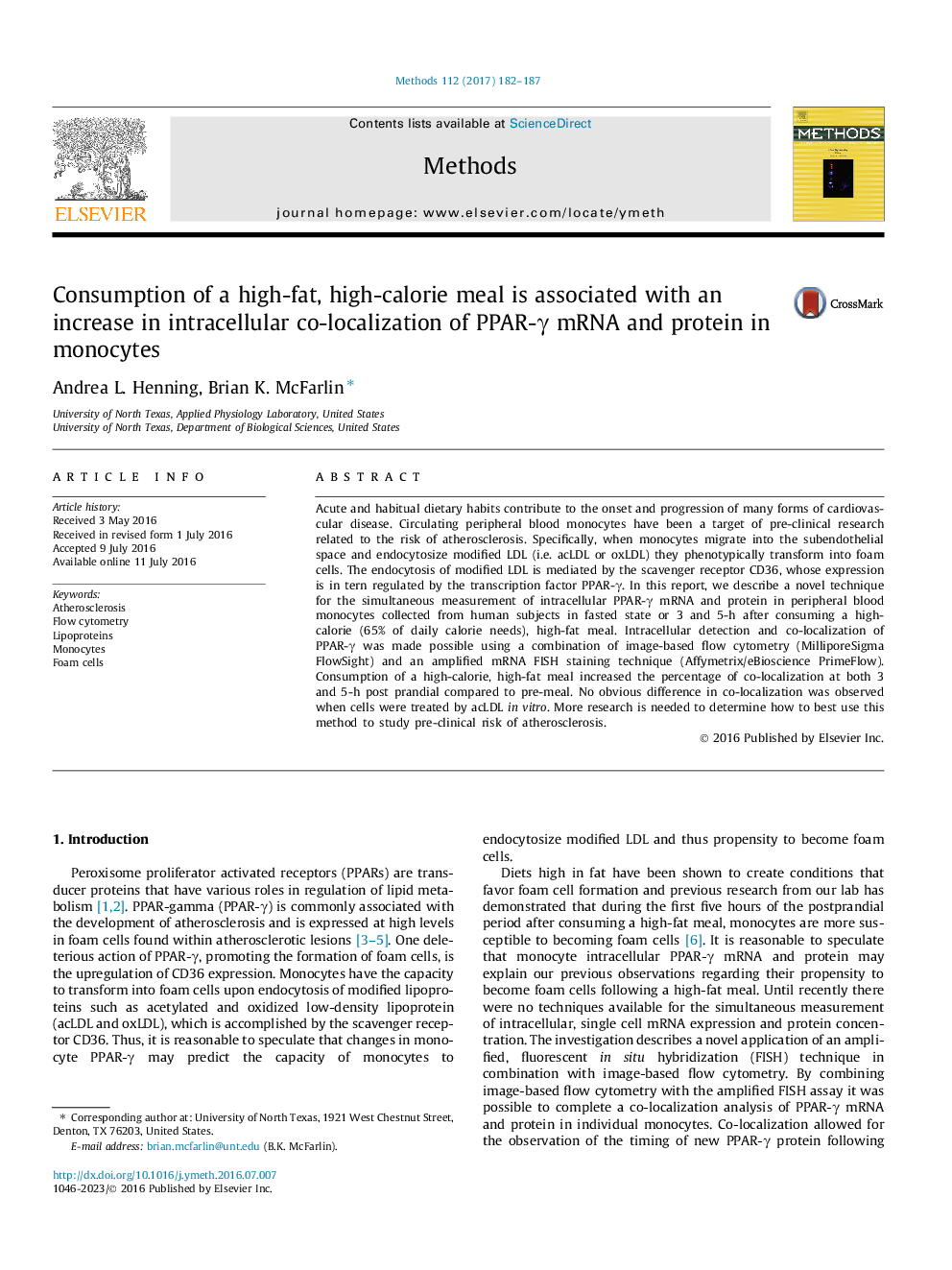| Article ID | Journal | Published Year | Pages | File Type |
|---|---|---|---|---|
| 5513545 | Methods | 2017 | 6 Pages |
â¢Monocytes are a biological source of naïve foam cells.â¢Monocyte response to modified LDLs, may allow assessment of pre-clinical CVD risk.â¢PPAR-g identified monocyte phenotype associated with modified LDL endocytosis.
Acute and habitual dietary habits contribute to the onset and progression of many forms of cardiovascular disease. Circulating peripheral blood monocytes have been a target of pre-clinical research related to the risk of atherosclerosis. Specifically, when monocytes migrate into the subendothelial space and endocytosize modified LDL (i.e. acLDL or oxLDL) they phenotypically transform into foam cells. The endocytosis of modified LDL is mediated by the scavenger receptor CD36, whose expression is in tern regulated by the transcription factor PPAR-γ. In this report, we describe a novel technique for the simultaneous measurement of intracellular PPAR-γ mRNA and protein in peripheral blood monocytes collected from human subjects in fasted state or 3 and 5-h after consuming a high-calorie (65% of daily calorie needs), high-fat meal. Intracellular detection and co-localization of PPAR-γ was made possible using a combination of image-based flow cytometry (MilliporeSigma FlowSight) and an amplified mRNA FISH staining technique (Affymetrix/eBioscience PrimeFlow). Consumption of a high-calorie, high-fat meal increased the percentage of co-localization at both 3 and 5-h post prandial compared to pre-meal. No obvious difference in co-localization was observed when cells were treated by acLDL in vitro. More research is needed to determine how to best use this method to study pre-clinical risk of atherosclerosis.
Graphical abstractDownload high-res image (149KB)Download full-size image
